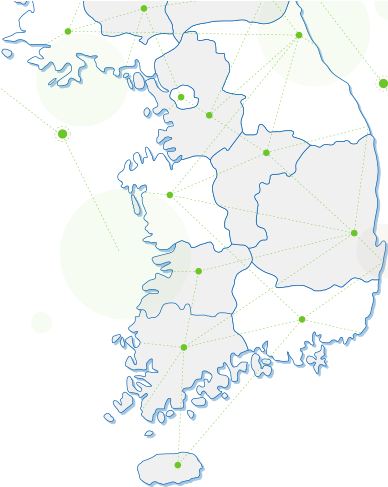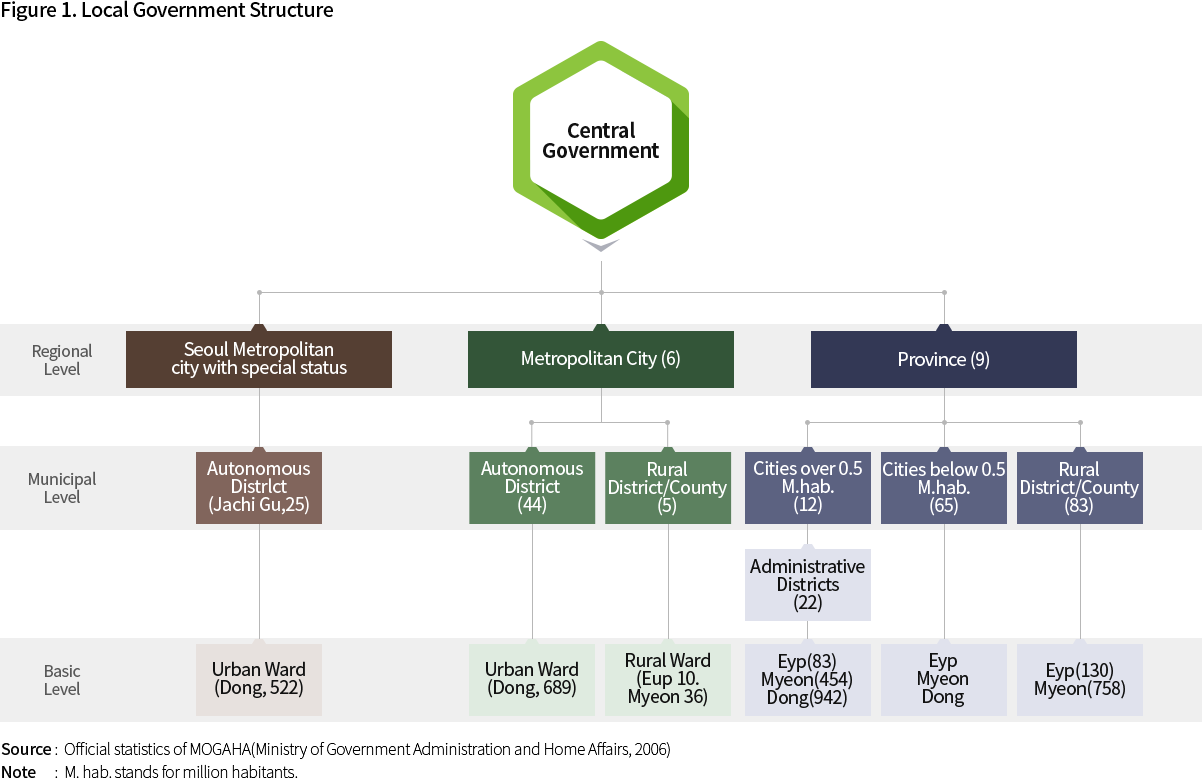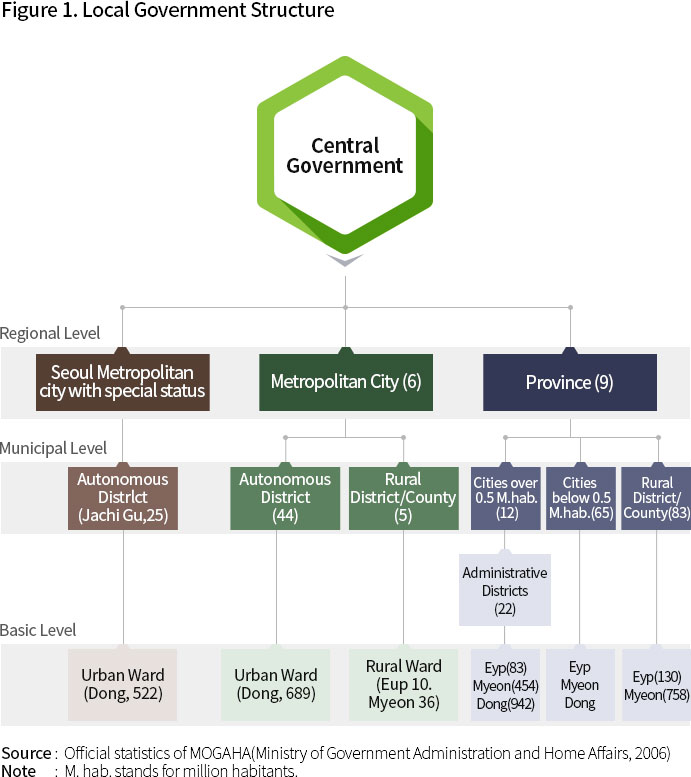Local Government Structure
The provincial level includes the Special Metropolitan City of Seoul, and 6 other metropolitan cities, and 9 provinces of which Jeju Provincial Government became (since the first of July 2006) Jeju Special Autonomous Provincial government under the “Special Act for the Establishment of the Jeju Special Autonomous Provincial Government and International Free City” which entailed, after the local referendum, the annexation of the 4 municipalities into the provincial sub-administrative units.
Metropolitan cities are urban areas separated from provinces, often former provincial capitals, after 1945, based on the rationale that the interests of urban areas are better served by their own governments; this despite strong provincial disapproval. The Seoul Special Metropolitan City differs much from its counterparts in that its mayor is equivalent to central government ministers, unlike provincial governors.
The municipalities below these provinces concern the municipal cities and counties, and both are governed by political representatives, who include mayors and council members. These counties and municipal-level cities comprise various administrative sub-units, Gun, Eup, Myeon, according to demographic criteria. When a Eup’s population exceeds 50,000, it can change its status to a city and, with over one million inhabitants, become a metropolitan city. The metropolitan cities, including Seoul, havs districts with a municipal status, like the other municipalities governed by elected mayors and council members.



Autonomous districts within Seoul differ considerably in terms of their population and surface area, each district’s population ranging from 250,000 to 600,000. It remains an open question whether these differences do reflect territorial distinctiveness and coherence. In other words, the scale of Korea’s basic local governments generally fits the technical needs of territorial management, but at the same time these administrative units may be too large to encourage participative local democracy. As far as the Metropolitan city at regional level is concerned, 6 metropolitan cities were granted their status as autonomous provincial governments in 1995. By placing an entire metropolitan area under the authority of a single Metropolitan city, government allows for overall control over development and land use. However, this same administrative arrangement can also pose problems for coordination between the metropolitan city and the province from which the former has been separated, considering especially that a metropolitan city with a population of over one million tends to exert economic and other influences beyond its own administrative boundaries. The boundaries of a metropolitan area cannot be definitively fixed since the appropriate boundary varies according to the function or goal in question.
Boundary Changes of Municipalities
The Ministry of Home Affairs announced a plan for boundary reforms in early 1994, proposing amalgamation process and a list of affected municipalities. These municipalities were selected based on criteria such as the spatial scope of daily life, a shared regional identity of the local population, governance efficiency, and the existence of balanced growth between an urban core and its surrounding hinterlands. This reform of “urban-rural integration” in the 1990s contrasts with the earlier reforms of “urban-rural separation” since it sought to create consolidated municipalities containing an urban core and rural adjacent areas. Overall, the number of municipal boundary changes has increased to 74 cities by 2001.












